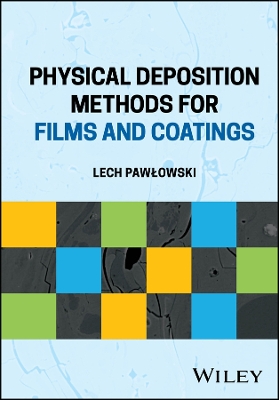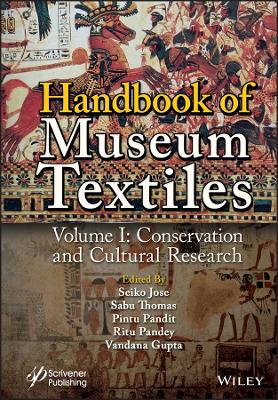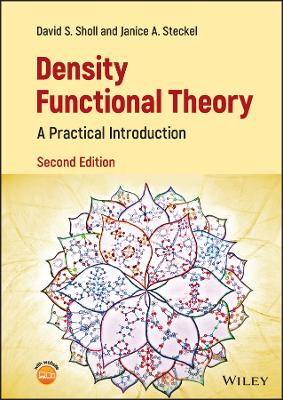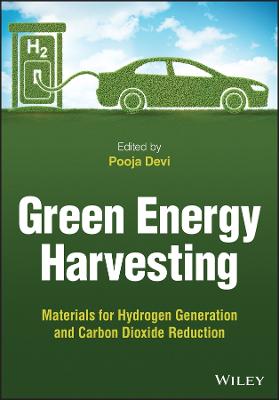Condensed-Phase Molecular Spectroscopy and Photophysics
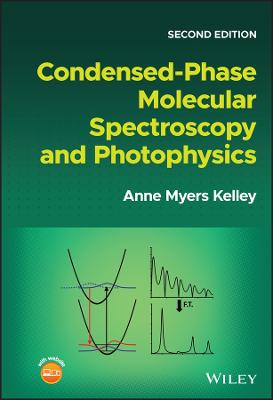 -15%
portes grátis
-15%
portes grátis
Condensed-Phase Molecular Spectroscopy and Photophysics
Kelley, Anne Myers
John Wiley & Sons Inc
09/2022
432
Dura
Inglês
9781119829263
15 a 20 dias
666
Descrição não disponível.
Preface to Second Edition
Preface to First Edition
About the Companion Website
I. BACKGROUND
1. Time-Independent Quantum Mechanics
1.1. states, operators, and representations
1.2. eigenvalue problems and the Schroedinger equation
1.3. expectation values, uncertainty relations
1.4. particle in a box
1.5. harmonic oscillator
1.6. the rigid rotator and angular momentum
1.7. the hydrogen atom
1.8. approximation methods
1.9. electron spin
1.10. Born-Oppenheimer approximation
1.11. molecular orbitals
1.12. energies and time scales, separation of motions
2. Classical Description of Electromagnetic Radiation
2.1. Maxwell's equations, plane waves, electric and magnetic fields, polarization
2.2. Fourier transform relationships between time and frequency
2.3. blackbody radiation
2.4. light sources for spectroscopy
3. Statistical mechanics
3.1. the partition function
3.2. the Boltzmann distribution
4. Group theory
4.1. qualitative aspects of molecular symmetry
4.2. introductory group theory
4.3. finding the symmetries of vibrational modes of a certain type
4.4. finding the symmetries of all vibrational modes
II. FUNDAMENTALS OF SPECTROSCOPY
5. Radiation-Matter Interactions
5.1. the time-dependent Schroedinger equation
5.2. time-dependent perturbation theory
5.3. interaction of matter with the classical radiation field
5.4. quantum mechanical description of radiation
5.5. interaction of matter with the quantized radiation field
6. Absorption and Emission of Light by Matter
6.1. Einstein coefficients for absorption and emission
6.2. other measures of absorption strength (absorption cross-section, Beer-Lambert Law)
6.3. radiative lifetimes
6.4. oscillator strengths
6.5. local fields
7. System-Bath Interactions
7.1. phenomenological treatment of relaxation and lineshapes
7.2. the density matrix
7.3. density matrix methods in spectroscopy
7.4. exact density matrix solution for a 2-level system
8. Atomic Spectroscopy
8.1. electron configurations
8.2. addition of angular momenta
8.3. term symbols
8.4. angular momentum coupling schemes
8.5. spin-orbit coupling
8.6. energies and selection rules
8.7. Zeeman effect
8.8. hyperfine splitting
9. Rotational Spectroscopy
9.1. rotational transitions of diatomic molecules
9.2. rotational spectroscopy of polyatomic molecules-symmetric, near-symmetric, and asymmetric tops
10. Molecular Vibrations and Infrared Spectroscopy
10.1. vibrational and rovibrational transitions
10.2. diatomic vibrations
10.3. anharmonicity
10.4. polyatomic molecular vibrations; normal modes
10.5. vibration-rotation interactions
10.6. symmetry considerations
10.7. isotopic shifts
10.8. solvent effects on vibrational spectra
11. Electronic Spectroscopy
11.1. electronic transitions
11.2. spin and orbital selection rules
11.3. vibronic structure
11.4. vibronic coupling
11.5. the Jahn-Teller effect
11.6. considerations in large molecules
11.7. solvent effects on electronic spectra
12. Photophysical Processes
12.1. Jablonski diagrams
12.2. quantum yields and lifetimes
12.3. Fermi's Golden Rule for radiationless transitions
12.4. internal conversion and intersystem crossing
12.5. bright state-dark state coupling and intramolecular vibrational relaxation
12.6. energy transfer
12.7. polarization and molecular reorientation in solution
13. Light Scattering
13.1. Rayleigh scattering from particles
13.2. classical treatment of molecular Raman and Rayleigh scattering
13.3. quantum mechanical treatment of molecular Raman and Rayleigh scattering
13.4. nonresonant Raman scattering
13.5. symmetry considerations and depolarization ratios in Raman scattering
13.6. resonance Raman spectroscopy
III. ADVANCED AND SPECIALIZED TOPICS IN SPECTROSCOPY
14. Nonlinear and Pump-Probe Spectroscopies
14.1. linear and nonlinear susceptibilities
14.2. multiphoton absorption
14.3. pump-probe spectroscopy: transient absorption and stimulated emission
14.4. vibrational oscillations and impulsive stimulated scattering
14.5. second harmonic and sum frequency generation
14.6. four-wave mixing
14.7. photon echoes
14.8. hyper-Raman scattering
14.9. broadband stimulated Raman scattering
15. Two-dimensional spectroscopies
15.1. the basics of two-dimensional spectroscopy
15.2. Fourier transform spectroscopy
15.3. implementation of Fourier transform 2D spectroscopy
16. Electron Transfer Processes
16.1. charge-transfer transitions
16.2. Marcus theory
16.3. spectroscopy of anions and cations
17. Collections of Molecules
17.1. van der Waals molecules
17.2. dimers and aggregates
17.3. localized and delocalized excited states
17.4. conjugated polymers
18. Metals and Plasmons
18.1. dielectric function of a metal
18.2. plasmons
18.3. spectroscopy of metal nanoparticles
18.4. surface-enhanced Raman and fluorescence
19. Crystals
19.1. crystal lattices
19.2. phonons in crystals
19.3. infrared and Raman spectra
19.4. phonons in nanocrystals
20. Electronic Spectroscopy of Semiconductors
20.1. band structure
20.2. direct and indirect transitions
20.3. excitons
20.4. defects
20.5. semiconductor nanocrystals
21. Single-molecule spectroscopy
21.1. detection of single-molecule signals
21.2. verification of single-molecule signals
21.3. frequency selection
21.4. spatial selection using far-field optics
21.5. spatial selection using near-field optics
21.6. what is learned from studying one molecule at a time?
22. Time-domain treatment of steady-state spectroscopies
22.1. time correlation function approach to IR and Raman lineshapes
22.2. time-dependent wavepacket picture of electronic spectroscopy
22.3. time-dependent wavepacket picture of resonance Raman intensities
APPENDICES
A. Physical constants, unit systems and conversion factors
B. Miscellaneous mathematics review
C. Matrices and determinants
D. Character tables for point groups
E. Fourier transforms
Index
Preface to First Edition
About the Companion Website
I. BACKGROUND
1. Time-Independent Quantum Mechanics
1.1. states, operators, and representations
1.2. eigenvalue problems and the Schroedinger equation
1.3. expectation values, uncertainty relations
1.4. particle in a box
1.5. harmonic oscillator
1.6. the rigid rotator and angular momentum
1.7. the hydrogen atom
1.8. approximation methods
1.9. electron spin
1.10. Born-Oppenheimer approximation
1.11. molecular orbitals
1.12. energies and time scales, separation of motions
2. Classical Description of Electromagnetic Radiation
2.1. Maxwell's equations, plane waves, electric and magnetic fields, polarization
2.2. Fourier transform relationships between time and frequency
2.3. blackbody radiation
2.4. light sources for spectroscopy
3. Statistical mechanics
3.1. the partition function
3.2. the Boltzmann distribution
4. Group theory
4.1. qualitative aspects of molecular symmetry
4.2. introductory group theory
4.3. finding the symmetries of vibrational modes of a certain type
4.4. finding the symmetries of all vibrational modes
II. FUNDAMENTALS OF SPECTROSCOPY
5. Radiation-Matter Interactions
5.1. the time-dependent Schroedinger equation
5.2. time-dependent perturbation theory
5.3. interaction of matter with the classical radiation field
5.4. quantum mechanical description of radiation
5.5. interaction of matter with the quantized radiation field
6. Absorption and Emission of Light by Matter
6.1. Einstein coefficients for absorption and emission
6.2. other measures of absorption strength (absorption cross-section, Beer-Lambert Law)
6.3. radiative lifetimes
6.4. oscillator strengths
6.5. local fields
7. System-Bath Interactions
7.1. phenomenological treatment of relaxation and lineshapes
7.2. the density matrix
7.3. density matrix methods in spectroscopy
7.4. exact density matrix solution for a 2-level system
8. Atomic Spectroscopy
8.1. electron configurations
8.2. addition of angular momenta
8.3. term symbols
8.4. angular momentum coupling schemes
8.5. spin-orbit coupling
8.6. energies and selection rules
8.7. Zeeman effect
8.8. hyperfine splitting
9. Rotational Spectroscopy
9.1. rotational transitions of diatomic molecules
9.2. rotational spectroscopy of polyatomic molecules-symmetric, near-symmetric, and asymmetric tops
10. Molecular Vibrations and Infrared Spectroscopy
10.1. vibrational and rovibrational transitions
10.2. diatomic vibrations
10.3. anharmonicity
10.4. polyatomic molecular vibrations; normal modes
10.5. vibration-rotation interactions
10.6. symmetry considerations
10.7. isotopic shifts
10.8. solvent effects on vibrational spectra
11. Electronic Spectroscopy
11.1. electronic transitions
11.2. spin and orbital selection rules
11.3. vibronic structure
11.4. vibronic coupling
11.5. the Jahn-Teller effect
11.6. considerations in large molecules
11.7. solvent effects on electronic spectra
12. Photophysical Processes
12.1. Jablonski diagrams
12.2. quantum yields and lifetimes
12.3. Fermi's Golden Rule for radiationless transitions
12.4. internal conversion and intersystem crossing
12.5. bright state-dark state coupling and intramolecular vibrational relaxation
12.6. energy transfer
12.7. polarization and molecular reorientation in solution
13. Light Scattering
13.1. Rayleigh scattering from particles
13.2. classical treatment of molecular Raman and Rayleigh scattering
13.3. quantum mechanical treatment of molecular Raman and Rayleigh scattering
13.4. nonresonant Raman scattering
13.5. symmetry considerations and depolarization ratios in Raman scattering
13.6. resonance Raman spectroscopy
III. ADVANCED AND SPECIALIZED TOPICS IN SPECTROSCOPY
14. Nonlinear and Pump-Probe Spectroscopies
14.1. linear and nonlinear susceptibilities
14.2. multiphoton absorption
14.3. pump-probe spectroscopy: transient absorption and stimulated emission
14.4. vibrational oscillations and impulsive stimulated scattering
14.5. second harmonic and sum frequency generation
14.6. four-wave mixing
14.7. photon echoes
14.8. hyper-Raman scattering
14.9. broadband stimulated Raman scattering
15. Two-dimensional spectroscopies
15.1. the basics of two-dimensional spectroscopy
15.2. Fourier transform spectroscopy
15.3. implementation of Fourier transform 2D spectroscopy
16. Electron Transfer Processes
16.1. charge-transfer transitions
16.2. Marcus theory
16.3. spectroscopy of anions and cations
17. Collections of Molecules
17.1. van der Waals molecules
17.2. dimers and aggregates
17.3. localized and delocalized excited states
17.4. conjugated polymers
18. Metals and Plasmons
18.1. dielectric function of a metal
18.2. plasmons
18.3. spectroscopy of metal nanoparticles
18.4. surface-enhanced Raman and fluorescence
19. Crystals
19.1. crystal lattices
19.2. phonons in crystals
19.3. infrared and Raman spectra
19.4. phonons in nanocrystals
20. Electronic Spectroscopy of Semiconductors
20.1. band structure
20.2. direct and indirect transitions
20.3. excitons
20.4. defects
20.5. semiconductor nanocrystals
21. Single-molecule spectroscopy
21.1. detection of single-molecule signals
21.2. verification of single-molecule signals
21.3. frequency selection
21.4. spatial selection using far-field optics
21.5. spatial selection using near-field optics
21.6. what is learned from studying one molecule at a time?
22. Time-domain treatment of steady-state spectroscopies
22.1. time correlation function approach to IR and Raman lineshapes
22.2. time-dependent wavepacket picture of electronic spectroscopy
22.3. time-dependent wavepacket picture of resonance Raman intensities
APPENDICES
A. Physical constants, unit systems and conversion factors
B. Miscellaneous mathematics review
C. Matrices and determinants
D. Character tables for point groups
E. Fourier transforms
Index
Este título pertence ao(s) assunto(s) indicados(s). Para ver outros títulos clique no assunto desejado.
molecule environment interactions; metallic nanostructures; semiconductor nanostructures; optical processes; nanoscale systems; two-dimensional spectroscopy; single-molecule spectroscopy; raman scattering; electromagnetic radiation
Preface to Second Edition
Preface to First Edition
About the Companion Website
I. BACKGROUND
1. Time-Independent Quantum Mechanics
1.1. states, operators, and representations
1.2. eigenvalue problems and the Schroedinger equation
1.3. expectation values, uncertainty relations
1.4. particle in a box
1.5. harmonic oscillator
1.6. the rigid rotator and angular momentum
1.7. the hydrogen atom
1.8. approximation methods
1.9. electron spin
1.10. Born-Oppenheimer approximation
1.11. molecular orbitals
1.12. energies and time scales, separation of motions
2. Classical Description of Electromagnetic Radiation
2.1. Maxwell's equations, plane waves, electric and magnetic fields, polarization
2.2. Fourier transform relationships between time and frequency
2.3. blackbody radiation
2.4. light sources for spectroscopy
3. Statistical mechanics
3.1. the partition function
3.2. the Boltzmann distribution
4. Group theory
4.1. qualitative aspects of molecular symmetry
4.2. introductory group theory
4.3. finding the symmetries of vibrational modes of a certain type
4.4. finding the symmetries of all vibrational modes
II. FUNDAMENTALS OF SPECTROSCOPY
5. Radiation-Matter Interactions
5.1. the time-dependent Schroedinger equation
5.2. time-dependent perturbation theory
5.3. interaction of matter with the classical radiation field
5.4. quantum mechanical description of radiation
5.5. interaction of matter with the quantized radiation field
6. Absorption and Emission of Light by Matter
6.1. Einstein coefficients for absorption and emission
6.2. other measures of absorption strength (absorption cross-section, Beer-Lambert Law)
6.3. radiative lifetimes
6.4. oscillator strengths
6.5. local fields
7. System-Bath Interactions
7.1. phenomenological treatment of relaxation and lineshapes
7.2. the density matrix
7.3. density matrix methods in spectroscopy
7.4. exact density matrix solution for a 2-level system
8. Atomic Spectroscopy
8.1. electron configurations
8.2. addition of angular momenta
8.3. term symbols
8.4. angular momentum coupling schemes
8.5. spin-orbit coupling
8.6. energies and selection rules
8.7. Zeeman effect
8.8. hyperfine splitting
9. Rotational Spectroscopy
9.1. rotational transitions of diatomic molecules
9.2. rotational spectroscopy of polyatomic molecules-symmetric, near-symmetric, and asymmetric tops
10. Molecular Vibrations and Infrared Spectroscopy
10.1. vibrational and rovibrational transitions
10.2. diatomic vibrations
10.3. anharmonicity
10.4. polyatomic molecular vibrations; normal modes
10.5. vibration-rotation interactions
10.6. symmetry considerations
10.7. isotopic shifts
10.8. solvent effects on vibrational spectra
11. Electronic Spectroscopy
11.1. electronic transitions
11.2. spin and orbital selection rules
11.3. vibronic structure
11.4. vibronic coupling
11.5. the Jahn-Teller effect
11.6. considerations in large molecules
11.7. solvent effects on electronic spectra
12. Photophysical Processes
12.1. Jablonski diagrams
12.2. quantum yields and lifetimes
12.3. Fermi's Golden Rule for radiationless transitions
12.4. internal conversion and intersystem crossing
12.5. bright state-dark state coupling and intramolecular vibrational relaxation
12.6. energy transfer
12.7. polarization and molecular reorientation in solution
13. Light Scattering
13.1. Rayleigh scattering from particles
13.2. classical treatment of molecular Raman and Rayleigh scattering
13.3. quantum mechanical treatment of molecular Raman and Rayleigh scattering
13.4. nonresonant Raman scattering
13.5. symmetry considerations and depolarization ratios in Raman scattering
13.6. resonance Raman spectroscopy
III. ADVANCED AND SPECIALIZED TOPICS IN SPECTROSCOPY
14. Nonlinear and Pump-Probe Spectroscopies
14.1. linear and nonlinear susceptibilities
14.2. multiphoton absorption
14.3. pump-probe spectroscopy: transient absorption and stimulated emission
14.4. vibrational oscillations and impulsive stimulated scattering
14.5. second harmonic and sum frequency generation
14.6. four-wave mixing
14.7. photon echoes
14.8. hyper-Raman scattering
14.9. broadband stimulated Raman scattering
15. Two-dimensional spectroscopies
15.1. the basics of two-dimensional spectroscopy
15.2. Fourier transform spectroscopy
15.3. implementation of Fourier transform 2D spectroscopy
16. Electron Transfer Processes
16.1. charge-transfer transitions
16.2. Marcus theory
16.3. spectroscopy of anions and cations
17. Collections of Molecules
17.1. van der Waals molecules
17.2. dimers and aggregates
17.3. localized and delocalized excited states
17.4. conjugated polymers
18. Metals and Plasmons
18.1. dielectric function of a metal
18.2. plasmons
18.3. spectroscopy of metal nanoparticles
18.4. surface-enhanced Raman and fluorescence
19. Crystals
19.1. crystal lattices
19.2. phonons in crystals
19.3. infrared and Raman spectra
19.4. phonons in nanocrystals
20. Electronic Spectroscopy of Semiconductors
20.1. band structure
20.2. direct and indirect transitions
20.3. excitons
20.4. defects
20.5. semiconductor nanocrystals
21. Single-molecule spectroscopy
21.1. detection of single-molecule signals
21.2. verification of single-molecule signals
21.3. frequency selection
21.4. spatial selection using far-field optics
21.5. spatial selection using near-field optics
21.6. what is learned from studying one molecule at a time?
22. Time-domain treatment of steady-state spectroscopies
22.1. time correlation function approach to IR and Raman lineshapes
22.2. time-dependent wavepacket picture of electronic spectroscopy
22.3. time-dependent wavepacket picture of resonance Raman intensities
APPENDICES
A. Physical constants, unit systems and conversion factors
B. Miscellaneous mathematics review
C. Matrices and determinants
D. Character tables for point groups
E. Fourier transforms
Index
Preface to First Edition
About the Companion Website
I. BACKGROUND
1. Time-Independent Quantum Mechanics
1.1. states, operators, and representations
1.2. eigenvalue problems and the Schroedinger equation
1.3. expectation values, uncertainty relations
1.4. particle in a box
1.5. harmonic oscillator
1.6. the rigid rotator and angular momentum
1.7. the hydrogen atom
1.8. approximation methods
1.9. electron spin
1.10. Born-Oppenheimer approximation
1.11. molecular orbitals
1.12. energies and time scales, separation of motions
2. Classical Description of Electromagnetic Radiation
2.1. Maxwell's equations, plane waves, electric and magnetic fields, polarization
2.2. Fourier transform relationships between time and frequency
2.3. blackbody radiation
2.4. light sources for spectroscopy
3. Statistical mechanics
3.1. the partition function
3.2. the Boltzmann distribution
4. Group theory
4.1. qualitative aspects of molecular symmetry
4.2. introductory group theory
4.3. finding the symmetries of vibrational modes of a certain type
4.4. finding the symmetries of all vibrational modes
II. FUNDAMENTALS OF SPECTROSCOPY
5. Radiation-Matter Interactions
5.1. the time-dependent Schroedinger equation
5.2. time-dependent perturbation theory
5.3. interaction of matter with the classical radiation field
5.4. quantum mechanical description of radiation
5.5. interaction of matter with the quantized radiation field
6. Absorption and Emission of Light by Matter
6.1. Einstein coefficients for absorption and emission
6.2. other measures of absorption strength (absorption cross-section, Beer-Lambert Law)
6.3. radiative lifetimes
6.4. oscillator strengths
6.5. local fields
7. System-Bath Interactions
7.1. phenomenological treatment of relaxation and lineshapes
7.2. the density matrix
7.3. density matrix methods in spectroscopy
7.4. exact density matrix solution for a 2-level system
8. Atomic Spectroscopy
8.1. electron configurations
8.2. addition of angular momenta
8.3. term symbols
8.4. angular momentum coupling schemes
8.5. spin-orbit coupling
8.6. energies and selection rules
8.7. Zeeman effect
8.8. hyperfine splitting
9. Rotational Spectroscopy
9.1. rotational transitions of diatomic molecules
9.2. rotational spectroscopy of polyatomic molecules-symmetric, near-symmetric, and asymmetric tops
10. Molecular Vibrations and Infrared Spectroscopy
10.1. vibrational and rovibrational transitions
10.2. diatomic vibrations
10.3. anharmonicity
10.4. polyatomic molecular vibrations; normal modes
10.5. vibration-rotation interactions
10.6. symmetry considerations
10.7. isotopic shifts
10.8. solvent effects on vibrational spectra
11. Electronic Spectroscopy
11.1. electronic transitions
11.2. spin and orbital selection rules
11.3. vibronic structure
11.4. vibronic coupling
11.5. the Jahn-Teller effect
11.6. considerations in large molecules
11.7. solvent effects on electronic spectra
12. Photophysical Processes
12.1. Jablonski diagrams
12.2. quantum yields and lifetimes
12.3. Fermi's Golden Rule for radiationless transitions
12.4. internal conversion and intersystem crossing
12.5. bright state-dark state coupling and intramolecular vibrational relaxation
12.6. energy transfer
12.7. polarization and molecular reorientation in solution
13. Light Scattering
13.1. Rayleigh scattering from particles
13.2. classical treatment of molecular Raman and Rayleigh scattering
13.3. quantum mechanical treatment of molecular Raman and Rayleigh scattering
13.4. nonresonant Raman scattering
13.5. symmetry considerations and depolarization ratios in Raman scattering
13.6. resonance Raman spectroscopy
III. ADVANCED AND SPECIALIZED TOPICS IN SPECTROSCOPY
14. Nonlinear and Pump-Probe Spectroscopies
14.1. linear and nonlinear susceptibilities
14.2. multiphoton absorption
14.3. pump-probe spectroscopy: transient absorption and stimulated emission
14.4. vibrational oscillations and impulsive stimulated scattering
14.5. second harmonic and sum frequency generation
14.6. four-wave mixing
14.7. photon echoes
14.8. hyper-Raman scattering
14.9. broadband stimulated Raman scattering
15. Two-dimensional spectroscopies
15.1. the basics of two-dimensional spectroscopy
15.2. Fourier transform spectroscopy
15.3. implementation of Fourier transform 2D spectroscopy
16. Electron Transfer Processes
16.1. charge-transfer transitions
16.2. Marcus theory
16.3. spectroscopy of anions and cations
17. Collections of Molecules
17.1. van der Waals molecules
17.2. dimers and aggregates
17.3. localized and delocalized excited states
17.4. conjugated polymers
18. Metals and Plasmons
18.1. dielectric function of a metal
18.2. plasmons
18.3. spectroscopy of metal nanoparticles
18.4. surface-enhanced Raman and fluorescence
19. Crystals
19.1. crystal lattices
19.2. phonons in crystals
19.3. infrared and Raman spectra
19.4. phonons in nanocrystals
20. Electronic Spectroscopy of Semiconductors
20.1. band structure
20.2. direct and indirect transitions
20.3. excitons
20.4. defects
20.5. semiconductor nanocrystals
21. Single-molecule spectroscopy
21.1. detection of single-molecule signals
21.2. verification of single-molecule signals
21.3. frequency selection
21.4. spatial selection using far-field optics
21.5. spatial selection using near-field optics
21.6. what is learned from studying one molecule at a time?
22. Time-domain treatment of steady-state spectroscopies
22.1. time correlation function approach to IR and Raman lineshapes
22.2. time-dependent wavepacket picture of electronic spectroscopy
22.3. time-dependent wavepacket picture of resonance Raman intensities
APPENDICES
A. Physical constants, unit systems and conversion factors
B. Miscellaneous mathematics review
C. Matrices and determinants
D. Character tables for point groups
E. Fourier transforms
Index
Este título pertence ao(s) assunto(s) indicados(s). Para ver outros títulos clique no assunto desejado.


